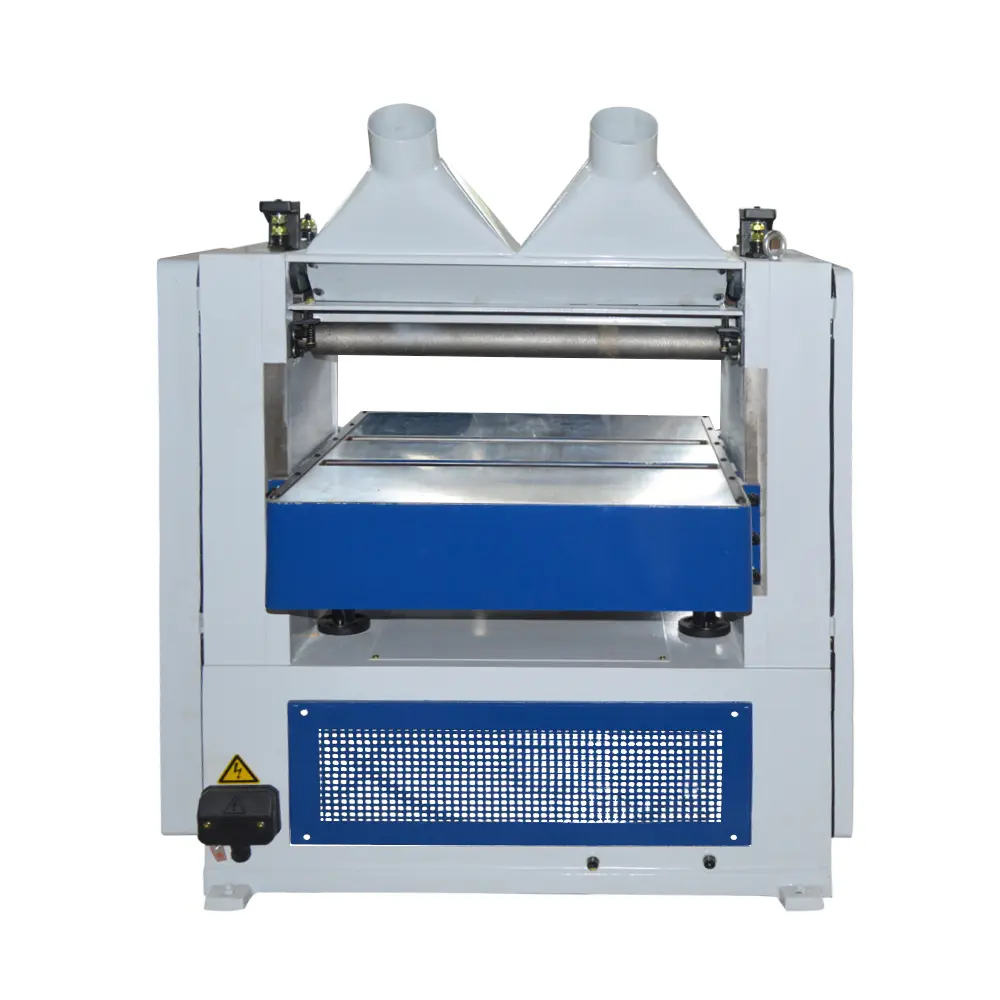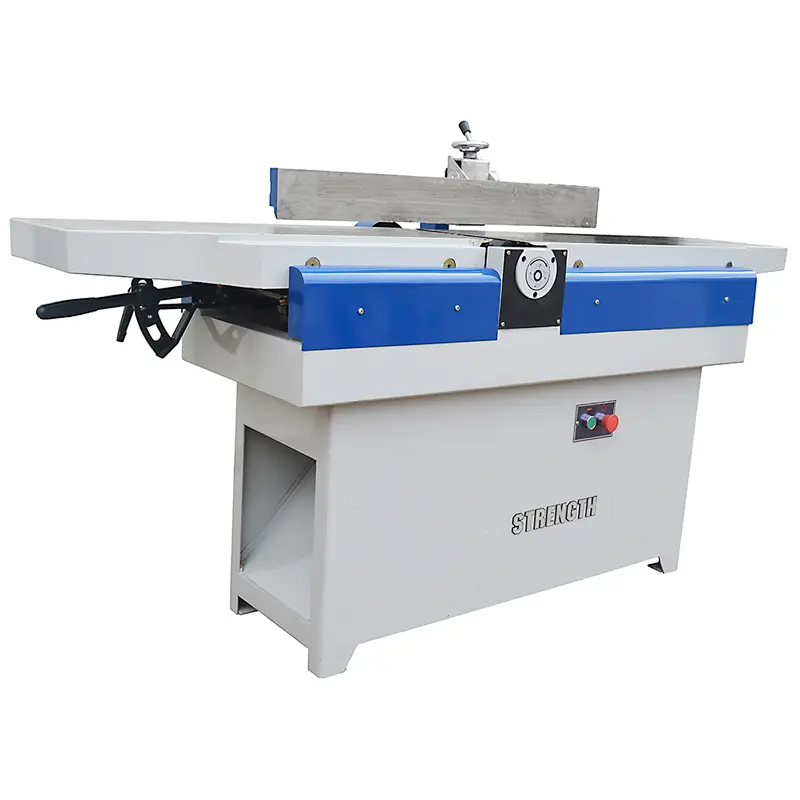When it comes to woodworking, having the right tools is crucial to getting quality results. The most important tools in a woodworking arsenal are the planer and tenoner. While both tools are used to prepare lumber for projects, they serve different purposes and operate in different ways. In this comprehensive blog post, we’ll explore the differences between planers and jointers, their functions, how they work, and when to use each tool. After reading this article, you will have a clear understanding of these two important woodworking machines.
Table of contents
- Introduction to woodworking tools
- **What is a connector? **
- 2.1. Adapter function
- 2.2. How connectors work
- 2.3. Connector type
- **What is a planer? **
- 3.1. Planer functions
- 3.2. How a planer works
- 3.3. Types of planers
- Main Differences between Planer and Planer
- 4.1. Purpose
- 4.2. Operation
- 4.3. wood preparation
- 4.4. surface treatment
- 4.5. Size and portability
- When to use a splicer
- When to use a planer
- Use a planer and planer together
- Conclusion
- FAQ
1. Introduction to woodworking tools
Carpentry is a craft that has been around for centuries and requires a variety of tools to shape, cut and finish wood. Of these tools, planers and planers are two of the most important for preparing wood for your project. Understanding the differences between these two machines is crucial for any woodworker, whether you are a beginner or an experienced craftsman.
2. What is a connector?
A jointer is a woodworking machine used to create a flat surface on a piece of wood. It is particularly useful for smoothing the surfaces and edges of boards, making them ready for further processing. The jointer is designed to eliminate any warping, twisting or bowing in the wood, ensuring a smooth and even surface.
2.1. Adapter function
The main function of the jointing machine is to smooth the surface of the panels. This is crucial to ensure that the wood can join together with other pieces without gaps or misalignment. Connectors can also be used to create straight edges on boards, which is important for making precise cuts and connections.
2.2. How connectors work
The splicing machine consists of a platform and a set of sharp blades mounted on a rotating cutter head. The wood is fed into the jointing machine, and as it passes over the blades, the high spots are shaved off, creating a flat surface. A jointing machine usually has two work stations: the feed table, where the wood is fed, and the outfeed table, where the wood leaves after processing.
2.3. Connector type
There are many types of connectors available, including:
- Benchtop Headers: Compact and portable, these headers are ideal for small workshops or hobbyists.
- Floor Model Connectors: These connectors are larger and more powerful, making them suitable for professional woodworkers and larger shops.
- Spindle Joints: These specialized joints are designed for specific tasks, such as joining curved edges.
3. What is a planer?
A planer, also called a thickness planer, is a woodworking machine used to reduce the thickness of boards while creating a smooth surface. Unlike planers, which flatten the surface of the wood, planers are designed to make the wood evenly thick.
3.1. Planer functions
The primary function of a planer is to produce boards of consistent thickness. This is especially important when working with rough-sawn lumber, as it allows the woodworker to achieve the dimensions required for their project. Planers can also be used to smooth wood surfaces, but their main purpose is to reduce thickness.
3.2. How a planer works
A planer consists of a set of sharp blades mounted on a rotating head, similar to a jointer. However, the design of the planer is different. The wood is fed into the planer from the top, and as the wood passes through the machine, the blades remove material from the top surface, creating a uniform thickness. Planers often have adjustable settings that allow the user to control the thickness of the cut.
3.3. Types of planers
There are many types of planers available, including:
- Benchtop Planers: Compact and portable, these planers are ideal for small workshops or hobbyists.
- Floor Stand Model Planers: These planers are larger, more powerful and suitable for professional woodworkers and larger shops.
- Handheld Planers: These portable tools are used for smaller jobs and can be operated by hand.
4. Main Differences between Planer and Jointer
While both planers and wood planers are essential tools for woodworking, they serve different purposes and have different features. Here are the main differences between the two:
4.1. Purpose
- Seaming Machine: The main purpose of the seaming machine is to flatten the surface of the board and create a straight edge. It is used to prepare wood for joining to other parts.
- Planer: The main purpose of the planer is to reduce the thickness of the board while creating a smooth surface. It is used to achieve uniform dimensions.
4.2. Operation
- Jointing Machine: A jointing machine works by feeding the wood through a set of blades that remove material at high points, creating a flat surface. Lumber is usually fed in one direction.
- Planer: A planer works by feeding the wood through a set of blades that remove material from the top surface, creating a uniform thickness. Wood is fed from the top and discharged from the bottom.
4.3. wood preparation
- Joiner: A jointer is used to prepare rough sawn lumber by smoothing the surface and creating straight edges. This is usually the first step in the woodworking process.
- Planer: Planer is used to further finish the wood after it has been joined. It ensures that the wood has a consistent thickness and smoothness.
4.4. surface treatment
- Seams: The surface finish produced by seams is usually smooth, but may require additional sanding for a finer finish.
- Planer: The surface finish produced by a planer is usually smoother than that of joinery, but sanding may still be required, especially if the wood is rough or defective.
4.5. Size and portability
- Connectors: Connector sizes may vary, but desktop models are generally more portable than floor-standing models. However, they may still need a dedicated space in the workshop.
- Planers: Planers also come in various sizes, with benchtop models being the most portable. Floor-standing model planers are larger and may require more space.
5. When to use connectors
A jointer is an essential tool for any woodworker working with rough-sawn lumber. Here are some scenarios where connectors should be used:
- Flatten Warped Sheets: If your sheet is warped, twisted, or bent, a jointer can help flatten it, making it suitable for further processing.
- Create Straight Edges: When joining two pieces of wood together, having straight edges is crucial. Joints can help you achieve this.
- Prepare the wood for gluing: If you are gluing multiple pieces of wood together to form a larger panel, use a jointer to ensure a flat surface and straight edges will result in a better bond .
6. When to use a planer
A planer is an important tool for making wood even in thickness. Here are some scenarios where you should use a planer:
- REDUCING THICKNESS: If your board is too thick for your project, a planer can help you reduce its thickness to the desired size.
- Smooth Surface: After joining the boards, you can use a planer to further smooth the surface and achieve a finer finish.
- Use Reclaimed Wood: Reclaimed wood often needs to be reduced in thickness and smoothed. A planer is ideal for this task.
7. Use a planer and planer together
In many woodworking projects, a planer and planer are used together to achieve the best results. Here’s how they work together:
- Start with rough-sawn lumber: Start with rough-sawn lumber that may be twisted or uneven.
- Using a jointer: First, thread the wood through the jointer to flatten one face and create a straight edge.
- Use a Planer: Next, use a planer to reduce the thickness of the board and sand the reverse side smooth.
- REPEAT AS NEEDED: Depending on the project, you may need to alternate between a jointer and a planer to get the desired size and surface finish.
8. Conclusion
All in all, jointers and planers are essential tools for any woodworker who wants to achieve quality results. While they have different uses—flattening surfaces and reducing thickness—they are often used together to prepare wood for projects. Understanding the differences between these two machines will help you make an informed decision about which tool to use and when.
Whether you are a hobbyist or a professional woodworker, investing in a good jointer and planer will significantly improve your woodworking abilities. By mastering the use of these tools, you can create beautiful, precise, high-quality wood products that will stand the test of time.
9. Frequently Asked Questions
**Question 1: Can I use a planer without a jointer? **
A1: Yes, you can use a planer without a jointer, but getting a flat surface and straight edges may be more challenging. If you’re starting with rough wood, you may need to do additional sanding or use other methods to flatten the wood.
**Question 2: Do woodworking requires connectors? **
A2: While a connector is not strictly necessary, it is very beneficial for achieving a flat surface and straight edges. Many woodworkers find that having a jointer significantly improves the quality of their projects.
**Question 3: Can I join and plan the same board? **
A3: Yes, usually one face and one edge of a board are joined before passing through a planer to achieve uniform thickness and smooth surface.
**Question 4: How do I maintain my planer and planer? **
A4: Regular maintenance includes cleaning the machine, inspecting and replacing blades as needed, and ensuring the work surface is aligned and free of debris.
**Question 5: What is the best way to learn how to use a planer and planer? **
A5: The best way to learn is through practice. Start with scrap wood and experiment with two machines. Additionally, consider taking a woodworking class or watching instructional videos to gain more knowledge and confidence.
This blog post provides a comprehensive overview of the differences between planers and planers, their functions, and how to use them effectively in woodworking. By understanding these tools, you can improve your woodworking skills and create beautiful projects with precision and ease.
Post time: Nov-11-2024


